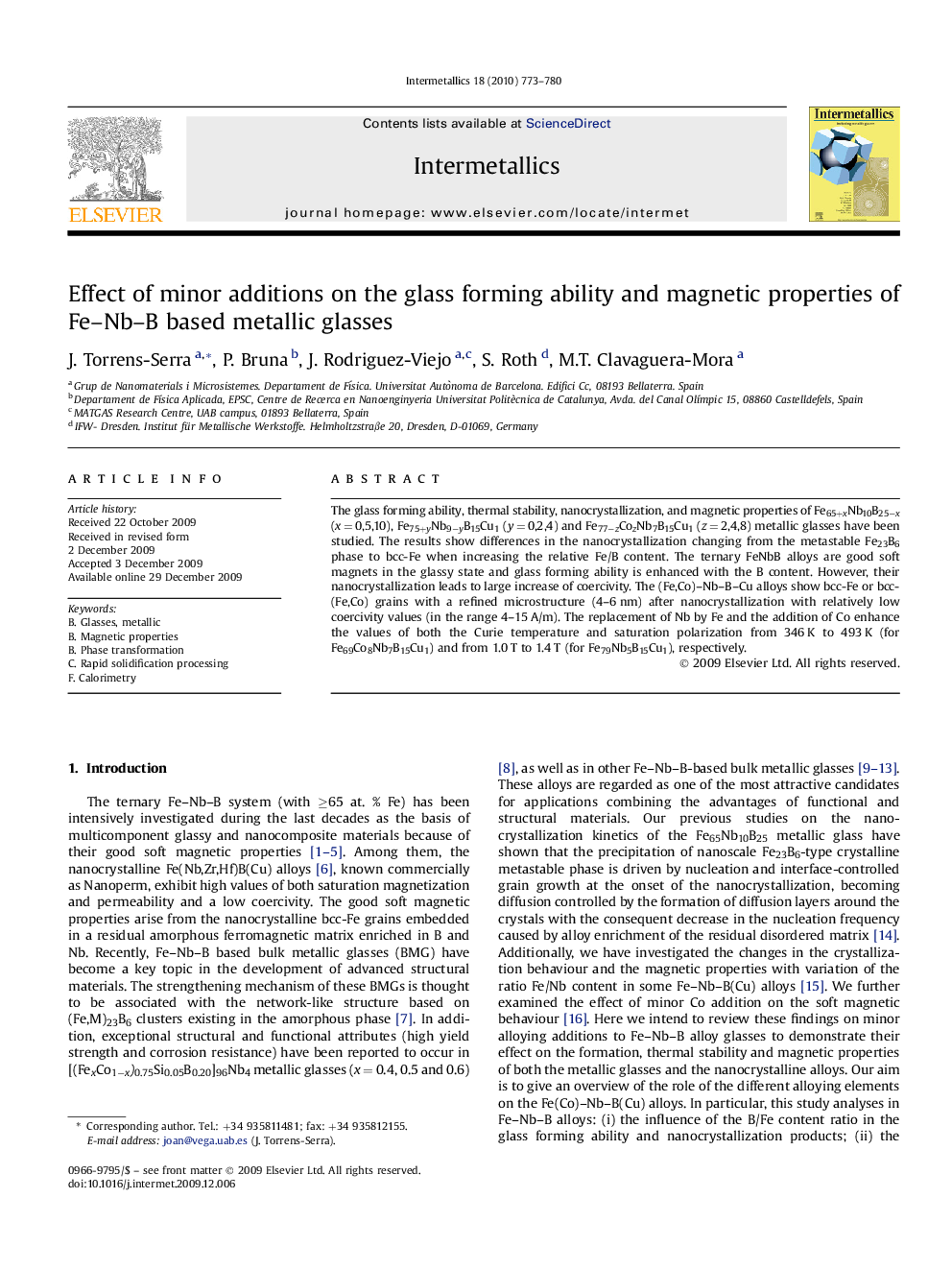| Article ID | Journal | Published Year | Pages | File Type |
|---|---|---|---|---|
| 1600976 | Intermetallics | 2010 | 8 Pages |
The glass forming ability, thermal stability, nanocrystallization, and magnetic properties of Fe65+xNb10B25−x (x = 0,5,10), Fe75+yNb9−yB15Cu1 (y = 0,2,4) and Fe77−zCozNb7B15Cu1 (z = 2,4,8) metallic glasses have been studied. The results show differences in the nanocrystallization changing from the metastable Fe23B6 phase to bcc-Fe when increasing the relative Fe/B content. The ternary FeNbB alloys are good soft magnets in the glassy state and glass forming ability is enhanced with the B content. However, their nanocrystallization leads to large increase of coercivity. The (Fe,Co)–Nb–B–Cu alloys show bcc-Fe or bcc-(Fe,Co) grains with a refined microstructure (4–6 nm) after nanocrystallization with relatively low coercivity values (in the range 4–15 A/m). The replacement of Nb by Fe and the addition of Co enhance the values of both the Curie temperature and saturation polarization from 346 K to 493 K (for Fe69Co8Nb7B15Cu1) and from 1.0 T to 1.4 T (for Fe79Nb5B15Cu1), respectively.
